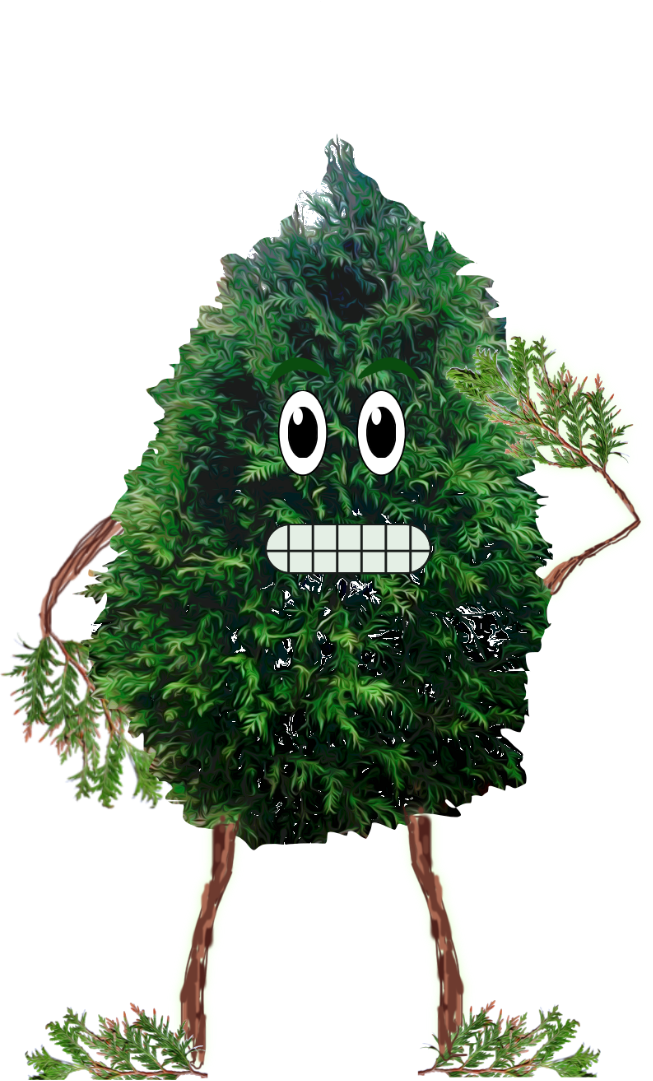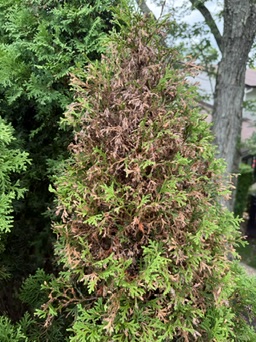Bagworm Damage is on the Rise: Protect Your Trees and Yard
- Kevin Lester

- Jun 10, 2024
- 4 min read
Updated: Aug 11
At Gregory Forrest Lester, Inc., we are committed to maintaining the health and beauty of your trees and landscape. One common pest that can pose a serious threat to your trees is the bagworm. Understanding how bagworms travel, what trees they affect, and how to treat and protect against them is crucial for maintaining a healthy yard.

Here's what you need to know:
What Are Bagworms?
Bagworms are caterpillars from the moth family Psychidae. These pests are notorious for creating protective cases or "bags" from silk and plant materials, which they carry around as they feed and grow. While inside these bags, they can be hard to spot, making them a stealthy adversary for many tree owners.

How Bagworms Travel
Bagworms primarily spread through a process known as "ballooning." Young bagworms release silk threads that catch the wind, allowing them to float to nearby trees. This natural dispersal method means they can easily infest multiple trees in a yard or neighborhood, rapidly expanding their reach.
Trees Affected by Bagworms

The bagworm is a perennial insect pest of arborvitae, juniper, pine, spruce, and many other evergreen species. It also can attack deciduous trees. Commonly affected trees include:
Evergreens: Such as arborvitae, juniper, pine, spruce, and cedar.
Deciduous Trees: Including maple, sycamore, elm, and willow.
Shrubs: Such as boxwood and viburnum.
Evergreens are particularly vulnerable because bagworms can cause severe defoliation, leading to tree death if not controlled. Deciduous trees usually refoliate after an episode of heavy defoliation, but stress leads to decline. Bagworms left untreated can lead to plant fatality.
Signs of Bagworm Infestation
Early detection is key to managing bagworms. Look out for:
Small, cone-shaped bags: These can be seen hanging from branches, resembling small pine cones. The bagworm is most easily recognized by the case or bag that the caterpillar forms and suspends from ornamental plants on which it feeds.
Defoliation: Noticeable thinning or browning of foliage, especially in the upper parts of the tree. Bagworm larvae injure plants when they feed on needles and leaves. Damage by mature larvae is especially destructive to evergreen plants.
Silk Threads: Presence of silk threads on branches or twigs.
Harmful insects found on trees lead to tree decline, lack of aesthetic appeal, and ultimately tree death. Treatments to improve tree health are often recommended; a healthier tree is stronger and less susceptible to pests.
Bagworm Activity in Cincinnati
In Cincinnati, bagworms are most active from late spring to early summer. The larvae typically hatch in late May to early June and begin feeding on tree foliage. This is the critical period for detection and treatment, as young larvae are more susceptible to insecticides and other control measures.
Recommended Treatments
Managing bagworm infestations involves a combination of chemical treatments and preventive measures. Here are some effective strategies:
Chemical Treatments:
Bagworm Spray: To control and target bagworm infestation, apply insecticides like Bacillus thuringiensis (Bt), spinosad, or insecticidal soaps during the early larval stage, usually in late spring to early summer. These treatments are most effective when larvae are small.
Systemic Insecticides: For severe infestations, systemic insecticides that are absorbed by the tree can be effective. These should be applied by a professional arborist.
Supportive Treatments:
Liquid Root Feeding: To build the root zone and support overall health, promoting a stronger tree less susceptible to pests.
Nutrient Injections: Inject critical micronutrients to improve tree health, ensuring your trees are robust and better able to withstand infestations.
Preventive Measures:

Regular Inspections: Regularly inspect your trees for signs of bagworms, especially during peak seasons. Early detection of an infestation requires careful examination of host plants for the presence of small bagworms attached to the leaves or needles.
Tree Health: Maintain the overall health of your trees through proper watering, mulching, and fertilization. Healthy trees are more resistant to pests.

Protecting Your Yard
At Gregory Forrest Lester, Inc., we offer comprehensive tree health services to protect your landscape from bagworms and other pests. Our services include:
Tree Inspections: Regular inspections to identify early signs of infestation.
Customized Treatment Plans: Tailored treatment plans that suit the specific needs of your trees.
Professional Application: Safe and effective application of insecticides by our certified arborists.
Ongoing Maintenance: Continuous monitoring and maintenance to ensure long-term tree health.
By understanding the threat of bagworms and taking proactive steps to manage them, you can protect your trees and enjoy a beautiful, healthy yard. If you suspect a bagworm infestation or need assistance with tree care, contact Gregory Forrest Lester, Inc. Our team of experts is here to help you keep your trees vibrant and pest-free.
Lester Leaf Tree-rific trivia:

Did you know that female bagworms never develop wings and never leave their bags? They spend their entire lives inside, from hatching to laying eggs. This makes early detection crucial because those seemingly harmless bags could be hiding hundreds of future pests! Keep an eye out and let's protect our trees together!



















